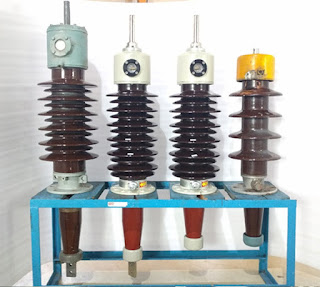Transformer Bushing: Enhancing Power Distribution Reliability and Efficiency
Transformer bushings are essential in the field of electrical engineering where efficient power distribution is crucial. These ostensibly straightforward parts serve as crucial connections between the transformer's internal parts and the exterior power lines. The safe and effective flow of energy is ensured by them in a variety of applications, from utility-scale power grids to industrial facilities, despite the fact that their purpose may seem simple. In this thorough investigation, we delve into the complexities of transformer bushings, comprehending their varieties, functionalities, and the essential part they play in improving the efficiency and reliability of power distribution.
Understanding Transformer Bushings:
An electrical conductor can pass through a grounded conducting barrier, such as a transformer tank, using a transformer bushing, which is fundamentally an insulated device. Its main purpose is to avoid electrical failure by making sure that the high voltage inside the transformer does not arc to the grounded outside. In essence, it fills the space between a transformer's internal and external components, allowing for the secure passage of electricity.
Types of Transformer Bushings:
There are several varieties of transformer bushings, each suited to particular applications and voltage ranges:
Oil-Impregnated Paper (OIP) Bushings:
OIP bushings, which are frequently used in oil-filled transformers, are created to function when submerged in insulating oil and offer good insulation and cooling capabilities.Resin-Impregnated Paper (RIP) Bushings:
RIP bushings employ epoxy resin-impregnated paper for insulation and are suitable for both oil-filled and dry-type transformers, providing dependable performance in a variety of settings.Condenser Bushings:
Condenser bushings are used in high-voltage applications and have a condenser core that increases their capacitance, making them perfect for situations where precise control over voltage distribution is required.SF6 Gas Bushings:
These bushings, which are filled with sulphur hexafluoride (SF6) gas, have remarkable dielectric qualities that make them appropriate for use in high-voltage and extra-high-voltage applications.
The Functionality of Transformer Bushings:
Enhancing Power Distribution Reliability:
Improving Power Distribution Efficiency:
Innovation and Sustainability in Transformer Bushings:
- Innovation in the field of electrical engineering is booming, with a focus on sustainability and environmental awareness. In terms of materials and manufacturing techniques, transformer bushings are also benefiting from improvements. Sustainable transformer bushing solutions are being made possible by recyclable components and eco-friendly insulation materials. These developments support the global movement towards eco-friendly technologies and sustainable lifestyles, ensuring that the power sector develops responsibly while satisfying the rising demand for energy.
- Transformer bushings are the unsung heroes providing the dependability and effectiveness of our electrical networks. They are frequently disregarded in the splendour of power systems. The significance of transformer bushings is increasing as technology develops. The power industry can rely on transformer bushings to enable flawless energy transmission, driving growth and supplying a brighter, more sustainable future by embracing innovation, sustainability, and a tireless dedication to quality.
.jpg)
.png)


Comments
Post a Comment